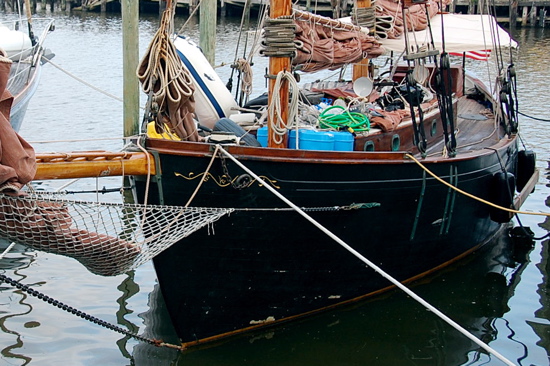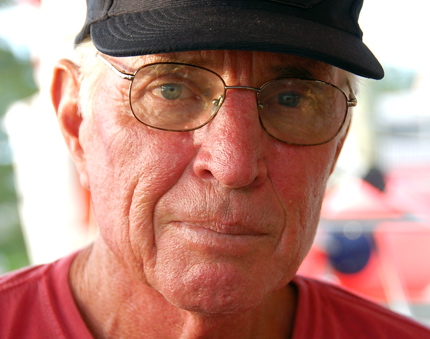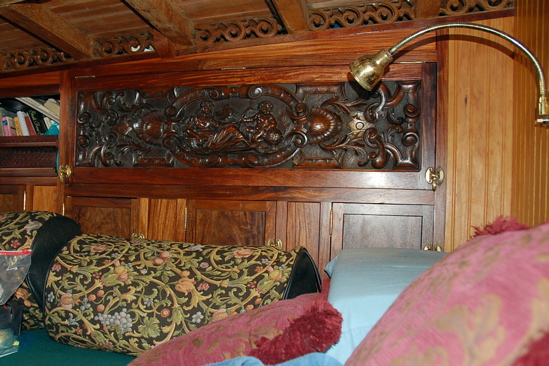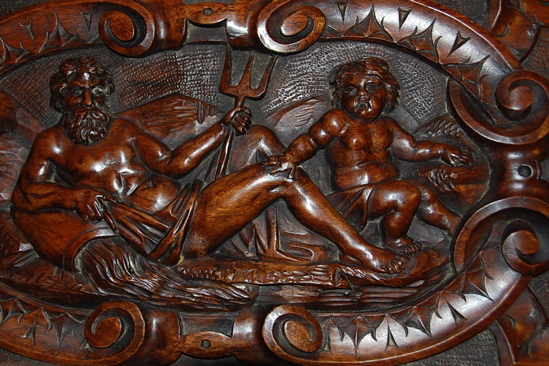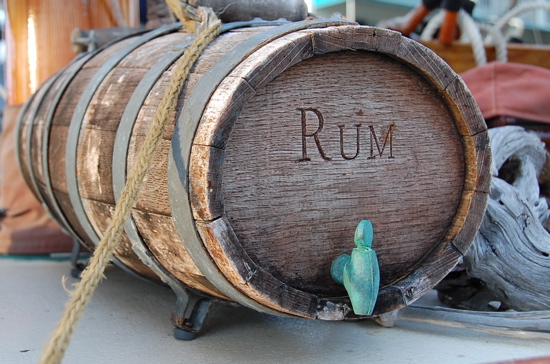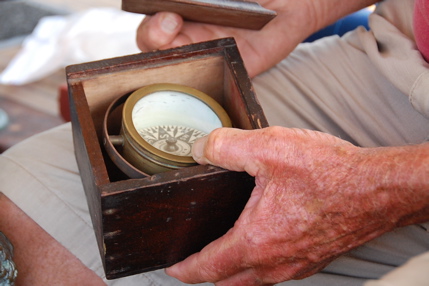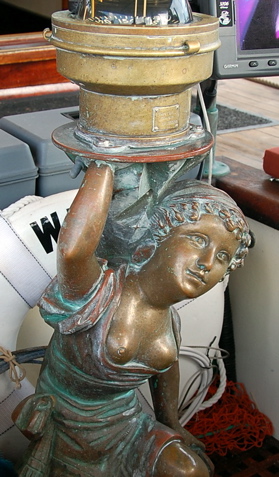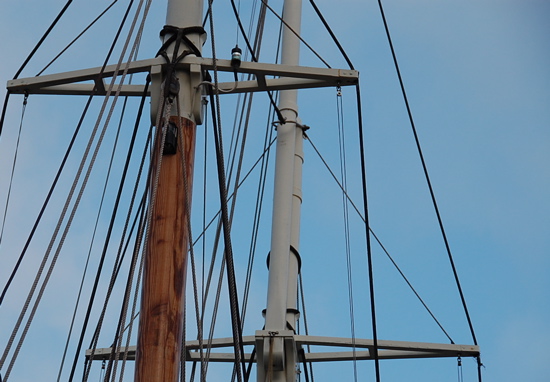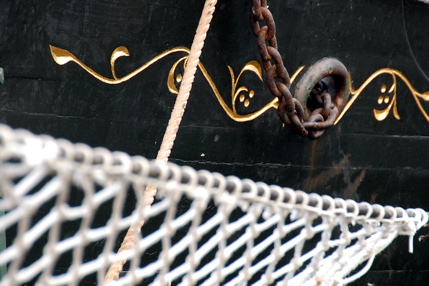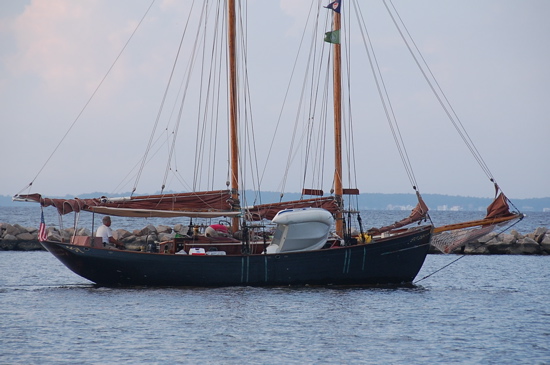It's Sunday January 4, 2026

Lots of boats come to Oriental, some tie up at the Town Dock for a night or two, others drop anchor in the harbor for a while. If you've spent any time on the water you know that every boat has a story. The Shipping News on TownDock.net brings you the stories of the boats that have visited recently.
July 12, 2010
For most boaters, yacht ownership is achieved relatively quickly. A vessel is chosen. A contract is signed. The new owner goes sailing.Not so for a cruising couple that recently visited Oriental. For Dave Clarke and Marge Grigg aboard the schooner “Winfield Lash”, the passage from sailing dream to actual sailing was a voyage two decades – and a few fires – in the making.
Schooner “Winfield Lash”Dave ClarkeMarge Grigg.It all started when Dave decided to build a traditional wood schooner. It appeared simple. Armed with a $120 set of plans and 5 week boat building coarse, Dave set out to build his dream vessel – a gaff rigger patterned after a William Atkin schooner built in 1927 for a certain Captain Service.
He soon found that building a 38-foot wooden boat from scratch would require outside assistance. So he hired Winfield Lash of Lash Brothers Boat Yard in Friendship, Maine to build the hull.
The hull was massively built. The keel timber, the ship’s backbone to which the iron keel is attached, was built from a 25-foot, 12-inch wide piece of white oak. The knees, the curved pieces of wood that brace the hull, were built of black locust, a wood so dense it sinks in water. The white cedar planking was bronze fastened to steam bent white oak ribs spaced on 12-inch centers.
The “Winfield Lash”‘s interior: built in the traditional fashion, the wood deck is set directly onto the deck beams (visible above the carvings). In hot, dry weather, the deck has to be kept wet to prevent the deck from drying out and leaking.When the hull was completed, Dave had it moved to his back yard. That’s when the enormity of the project hit him. “There it was. No cockpit, no decks, no house.” he recalls. “I felt like a first-calf heifer. Like I’d just had the biggest bowel movement I had ever had”.
Then he got back to building.
A traditional wooden plank-on-frame-schooner, especially one the size of the “Winfield Last”, is composed of thousands of parts: rivets, planks, spars, paneling and water tanks. If bought new, the cost can be staggering. Dave took another approach. Rather than buy all new parts, he used, and in some cases re-used, what he had at hand.
“Winfield Lash” is testament to thrift and persistence combined with an ample dose of salvage work. Her interior doors, ship’s wheel, cockpit grate and trim were built of Andaman padauk wood salvaged off the 1910 steam launch owned by the founder of Union Carbide.
Carving detail: Neptune, Roman god of the sea, reposes aboard the “Winfield Lash”.The oak barrel inscribed “Rum” is said to have served as a water container aboard a World War I life raft.
The water barrel aboard “Winfield Lash” is built of white oak, a hard wood noted for its water keeping properties.The box compass, a small compass that resides in a wood box, is off the catboat “Mascot” made famous in the book “The Boy, Me and The Cat”, the story of a 1912 catboat journey from Maine to Florida.
“Mascot“s compass takes a second trip down the Intracoastal Waterway, almost 100 years after the first voyage.“Winfield Lash”‘s binnacle mount. Of all the schooner’s bronze pieces, Dave says it’s the piece that he polishes with the most enthusiasm.What Dave didn’t salvage, he built from scratch – like the binnacle mount. On a vessel, the binnacle mount holds up the ship’s compass. It has to be strong to support the weight of bronze, brass, glass and compass oil used in a traditional ship’s compass. It also has to be rigid. In heavy seas, because the mount is directly in front of the helm, the helmsman might grab it for support. In Dave’s case, it also had to be artistic. Using a table base in his home as a pattern, he had the piece custom cast. And, like many things aboard a boat, it had to serve more than one purpose. “The fuel separator is hidden in the body” Marge says, “and she vents through the head.”
Dave labored on. The years passed.
Then there were the fires.
There was the time Dave’s house and shop caught on fire. As the fire blazed, the spray paint cans inside the structure started exploding. “The fire fighters thought it was ammo going off.” Dave says, so his home and shop burned to the ground. “The only thing they saved, aside from my pattern maker’s tool chest, was the foundation.” Gone was the collection of ships’ models he’d carved. The supply of maple and mahogany he’d amassed over the years was reduced to ashes.
Fortunately, the “Winfield Lash” was off-site and escaped unscathed.
Almost.
Another time, a fire broke out at the Lash boatyard, where the schooner’s masts were stored. Both were destroyed. So Dave built new ones.
Schooner lingo: The mast in the foreground is the foremast. Behind it is the mainmast. Atop the mainmast is the white topmast, used for carrying extra sail.Despite the setbacks of time and flame, Dave carried on building his vessel. The secret he says “was just to start over again….”
Finally, in 2000, “after 18 years, 3 kids through college and moving 3 times”, the “Winfield Lash” was launched. Nine years later, in 2009, after a few years of coastal cruising that included a grounding that holed the vessel, Dave and Marge turned the vessel’s bow south.
Schooner scrollworkSeeking warmer temperatures, they left Rhode Island in October, sailing their way south via Cape May, the Chesapeake Bay and the Dismal Swamp. They arrived in Florida in early winter where, instead of warm trade winds, they were greeted by temperatures that dipped to the mid-twenties. “It was so cold”, Marge says, “the iguanas were falling out of the trees into the water and drowning.”
Unfazed, the crew of the “Winfield Lash” crossed the Gulf Stream, pushing on to North Rock, Nassau, the Exumas and Marsh Harbor, before returning to Vero Beach, Florida this May.
Save for the schooner’s varnish, which shows the effects of a season’s tropical cruising, the vessel performed to Dave and Marge’s satisfaction.
Slowly Maine-bound: schooner “Winfield Lash” leaving Oriental.Where to next? From Oriental, Dave and Marge plan to sail home to Maine where they look forward to a season of fresh lobster, mussels and ship-baked apple pies. For now, the plan is to cruise the “Winfield Lash“schooner slowly in New England waters, in the fashion suited to a vessel that enters an owner’s life over decades, not weeks.
